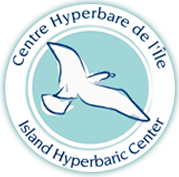THE IMPACT OF USING HYPERBARIC OXYGEN THERAPY IN TREATING DIABETIC FOOT ULCERS
THE IMPACT OF USING HYPERBARIC OXYGEN THERAPY IN TREATING DIABETIC FOOT ULCERS
An estimated 240,000 to 300,000 Canadians will have a Diabetic Foot Ulcers (DFU) in their lifetime. DFU is associated with major morbidity, in many cases leading to lower extremity amputation (LEA).
• Adjunctive HBOT for DFU is more effective than standard care alone. The proportion of major LEAs can decrease from 32% among patients receiving standard care to 11% among those receiving adjunctive HBOT. There was a decrease in the proportion of unhealed wounds with HBOT; the reverse was true for minor LEAs.
• HBOT for DFU is cost effective compared with standard care. The 12-year cost for a patient receiving HBOT was C$40,695 compared to C$49,786 for standard care alone, with an associated increase of 0.63 quality adjusted life years (QALYs) (3.01 QALYs for standard care to 3.64 QALYs for those receiving HBOT)
• HBOT requires additional resources and planning. The estimated costs to treat all prevalent DFU cases in Canada is C$14 million per year for four years.
• It is important to note that these results were attained when hyperbaric oxygen is relegated to an intervention of last resort. It is important to point out the the cost savings provided by the earlier integration of HBOT into coordinated wound care would greater. Guidelines would need to be applied to identify those patients most appropriately treated with HBOT. As standard care evolves and better quality studies become available, the estimated comparative advantage of HBOT may change.
